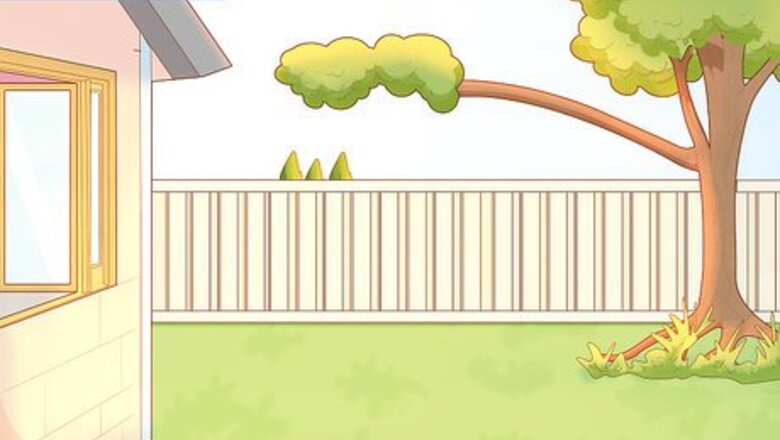
views
Choosing and Preparing a Planting Location
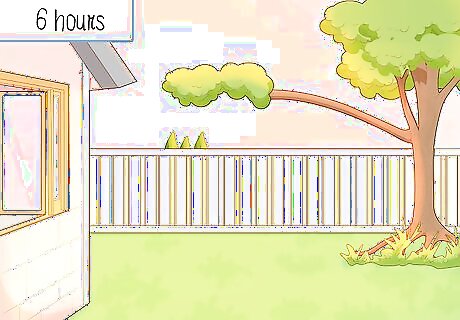
Choose an area that gets full sun for at least 6 hours a day. Horehound loves sun, so pick a spot in your garden that will get direct sunlight for most of the day. Select a promising spot and check it several times throughout the day between sunrise and sunset to make sure that it stays in full sun for most of the daylight hours. Horehound can tolerate partial shade, but it does best in full sun. It’s best to check your garden’s sun exposure at a time when there are leaves on the trees. Otherwise, you may not get a clear idea of how shady the area can get during the spring and summer.
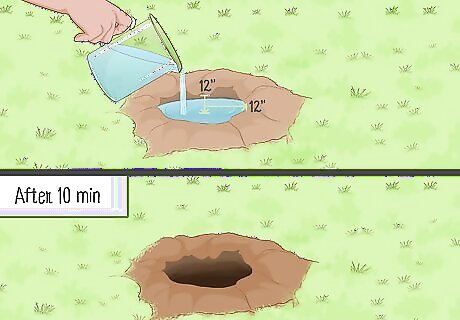
Pick a spot with well-drained soil. Horehound can grow in most soil types, but it does best in soil that is poor, sandy, and relatively dry. Choose a spot where the soil drains well and doesn’t get waterlogged. To check if your soil is well-drained, dig a hole about 12 inches (30 cm) across by 12 inches (30 cm) deep. Pour some water into the hole and see how fast it drains. Ideally, all the water should be gone in 10 minutes or less.
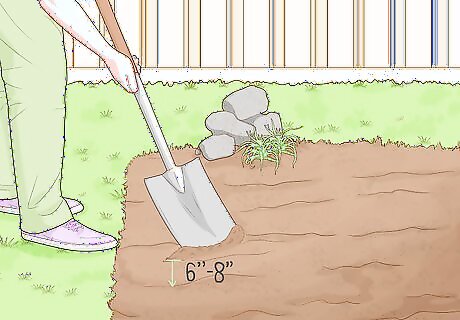
Till the top 6–8 inches (15–20 cm) of soil. Before you plant your horehound, prepare a space in your garden by removing any unwanted plant cover and tilling the soil. Don’t add any compost or fertilizer to the soil. Depending on how large the area is where you would like to plant the horehound, you can either use a tiller or turn over the soil by hand with a garden spade. Remove any large rocks and spread out the turned-up soil with a rake.
Sowing the Seeds
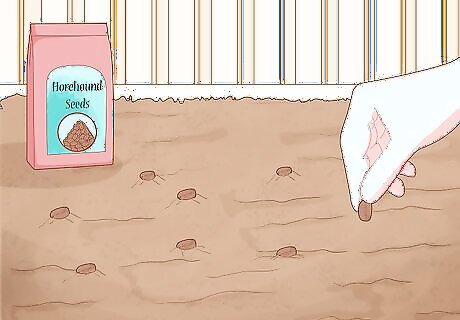
Plant the seeds 3 weeks before the last frost date. Horehound takes a long time to germinate, so you will need to plant it early in the spring. Check an almanac for your area or ask at a local garden center to find out when the last frost is supposed to take place in your area. If you prefer, you can start the seedlings in containers indoors. However, you will need to wait until after the last frost to bring them outside and plant them in your garden. You can purchase horehound seeds from your local garden center or order them online.
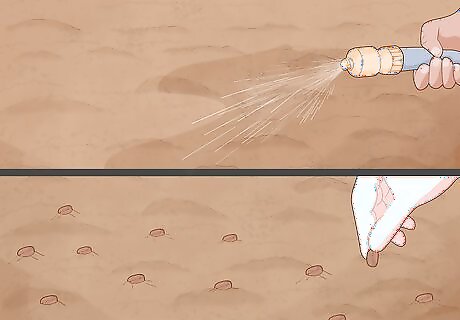
Dampen the soil before sowing the seeds. Use a spray bottle or a hose with a misting attachment to make the soil slightly damp before planting the seeds. Horehound does not do well in soggy soil, so don’t saturate it—just moisten it slightly. Similarly, if you choose to start your seedlings indoors, moisten your potting soil a little bit first. Keep it slightly damp, but not soggy, while the seeds are sprouting.
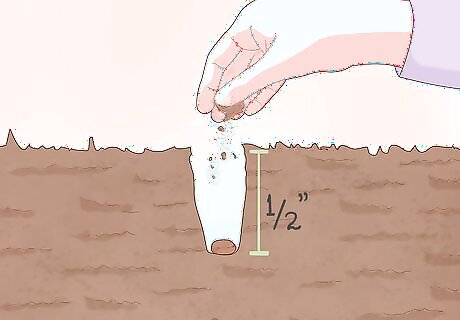
Sow the seeds about ⁄4 inch (0.64 cm) deep. Horehound germinates best if it’s planted at a very shallow depth. Plant the seeds ⁄4 inch (0.64 cm) deep or scatter them directly over the ground and cover them with a thin layer of soil. Don’t worry about spacing out the seeds at this point. Horehound doesn’t have a great germination rate, so you’ll want to plant lots of seeds and then thin them out as needed once they start to grow.
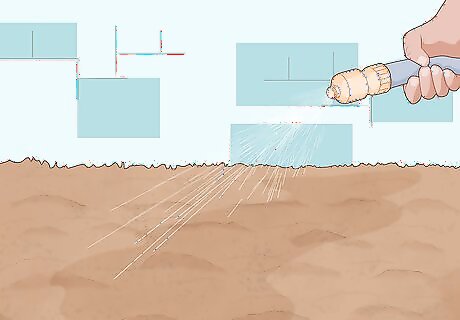
Mist the soil lightly if it dries out. Check the soil occasionally after you plant the seeds to make sure it’s still moist. Mist the soil lightly if it starts to dry out, but don’t water it to the point that it becomes soggy.
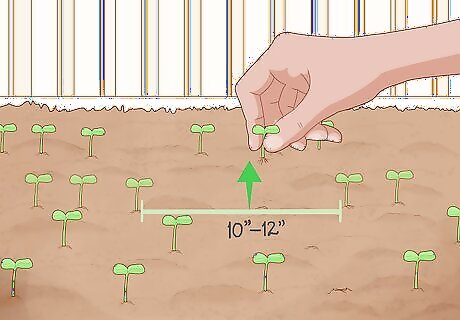
Thin out the seedlings to 10 inches (25 cm) apart. Once the seedlings are established, you’ll need to thin them out so that your garden doesn’t become overcrowded. Remove the excess seedlings and leave about 10–12 inches (25–30 cm) of space between the remaining plants so they’ll have plenty of room to spread out. A mature horehound plant can grow up to 2 feet (61 cm) across.
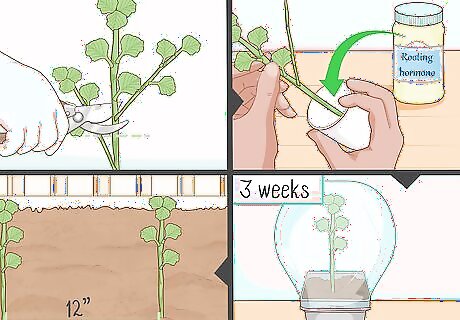
Grow horehound from cuttings as an alternative to planting seeds. If you’d rather start horehound from cuttings, take a clipping from just below a node on the stem. Remove the bottom few leaves and dip the stem in a rooting hormone, then place the cutting in some warm, damp rooting medium (such as potting soil or vermiculite). Seal the planted cutting in an air-filled plastic bag for about 3 weeks or until roots begin to form. Once your horehound cuttings develop roots, plant them in the garden about 12 inches (30 cm) apart. For the best results, do this in the early spring, after the last frost.
Caring for Your Horehound Plants
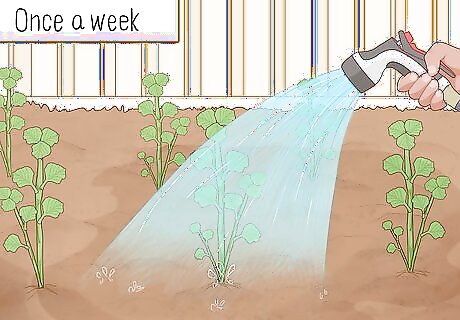
Water your horehound no more than once a week. Horehound is a drought-tolerant plant that doesn’t do well in soggy soil. Once your horehound is planted, water it around once a week or wait as long as it takes for the soil to dry out between waterings. If you water your horehound too frequently or plant it in soggy soil, it will die.
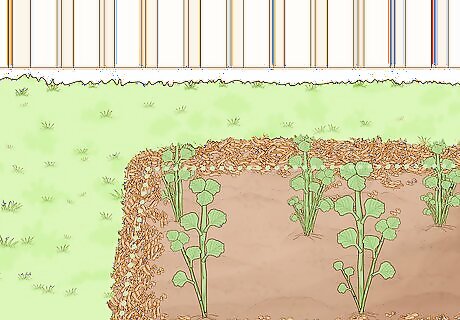
Put mulch around the plants to prevent weeds from growing. To keep your horehound patch free of weeds—and to help contain the aggressive horehound—put a layer of mulch on the soil around your planting area. Grass clippings, straw, or newspapers are good mulching options. Leave a little space between the mulch and the bases of your plants to keep from smothering the roots.
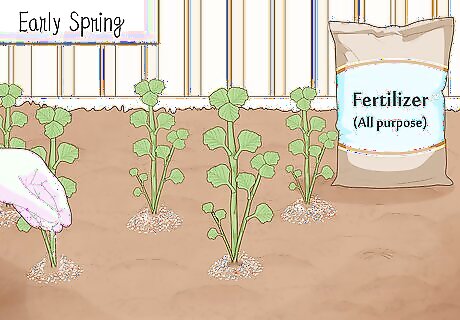
Add all-purpose fertilizer to an established horehound plant early in the spring. Horehound doesn’t need much fertilizer. However, giving an established plant a little fertilizer early in the year can encourage stronger growth. Add a little all-purpose fertilizer around the base of the plant in early spring. You can also help it grow new leaves after harvest by using an organic or all-purpose liquid nitrogen fertilizer. Don’t fertilize your horehound at the end of the growing season. This will disrupt its ability to harden off before winter.
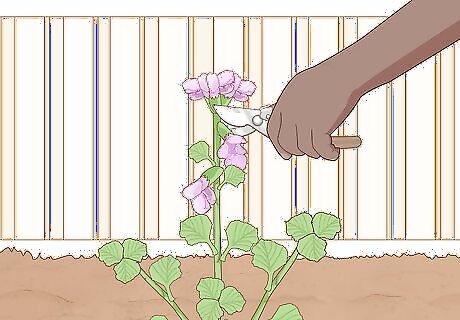
Cut off flowers before they go to seed to prevent overpopulation. Horehound is very good at self-propagating, and it can also invade your whole garden if you let it. To keep your horehound from getting out of hand, cut off any flowers that develop before they have a chance to turn into seed heads. Once the flowers go to seed, the petals will begin to turn brown and wilt, and you will notice a small cluster dark brown nutlets developing in the center. Each of these nutlets contains a seed. Horehound is considered an invasive species in some areas, so use caution when growing this plant in your garden.
Harvesting Your Horehound
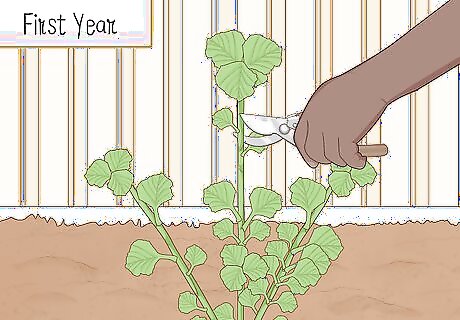
Harvest no more than one-third of the leaves during the first year. Your horehound probably won’t produce any flowers during its first year of growth. You can harvest leaves during the first year, but make sure not to take more than one-third of the leaves off the top of the plant. You can use the leaves to make cough syrup, tea, or cough drops.
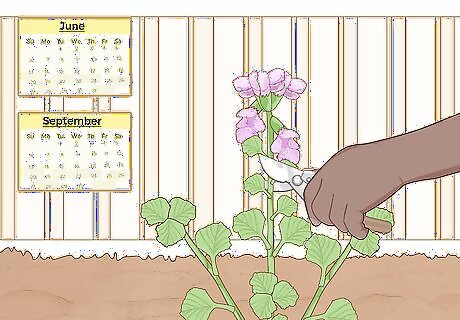
Harvest leaves and flowers from the top of the plant in summer and early fall. If you’d like to use your horehound plant to make herbal tea, candy, or cough drops, you can harvest the flowers and leaves during the blooming season. Horehound typically blooms between June and September. Like the leaves, horehound flowers have a minty flavor.
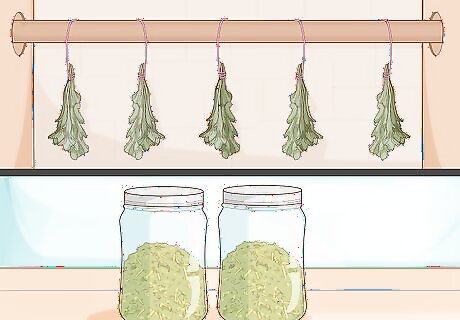
Dry your harvested horehound and store it for later use. You can dry horehound leaves and flowers by bundling them and hanging them out of direct sunlight. Chop up the dried leaves and flowers and store them in an airtight container for up to a year. For optimum freshness, store the dried horehound in a cool, dry place. Once you harvest the horehound, you can use it to make horehound candy or cough drops. Make a hot water infusion with the leaves and cook the resulting liquid with brown sugar and corn syrup until it reaches the hard crack stage. You can also steep the dried leaves and flowers in hot water to make a soothing herbal tea.











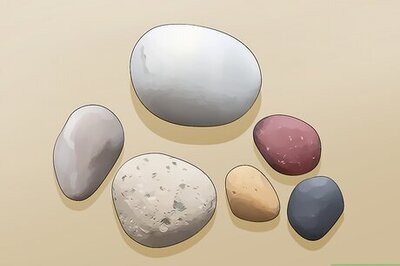

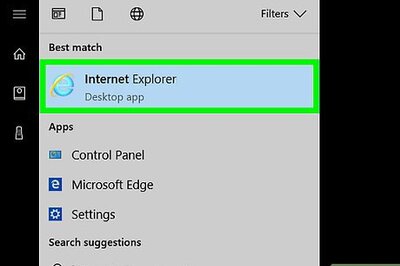






Comments
0 comment